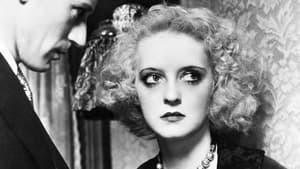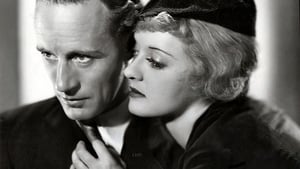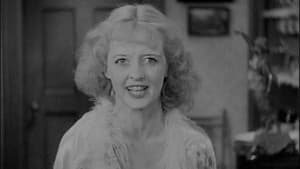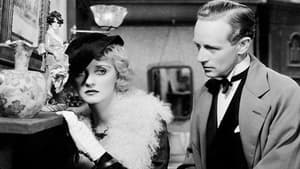Contact: info@alwanfilm.com
Video Sources 0 Views
- Watch trailer
- Of Human Bondage 1934 Colorized

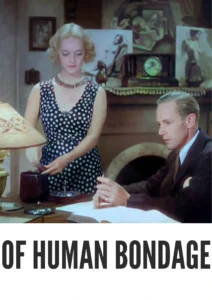
Synopsis
Table of Contents
ToggleOf Human Bondage 1934 Colorized Review: A Timeless Tale of Love and Despair

Introduction
In the realm of classic cinema, few films tackle the intricacies of human emotion and the struggle for personal freedom as poignantly as Of Human Bondage (1934). Directed by the visionary John Cromwell, this adaptation of W. Somerset Maugham’s novel delves deep into themes of love, obsession, and the human condition. The film, which features a powerhouse performance by Leslie Howard as Philip Carey, explores the complexities of desire and the pain of unrequited love. In this review, we will analyze the significance of Of Human Bondage (1934) within the context of film history, highlighting its narrative depth, character development, and lasting impact.
Check The Full Colorized Movies List
Check Our Colorized Movies Trailer Channel
Understanding Of Human Bondage 1934 Colorized Director, Cast, and Genre
Director’s Vision
John Cromwell, an accomplished filmmaker known for his ability to tackle intense emotional narratives, directed Of Human Bondage with a vision that emphasized the inner turmoil of its protagonist. Cromwell’s adeptness at capturing complex emotions allows the audience to connect with Philip Carey’s struggles on a profound level. His directorial choices bring Maugham’s rich prose to life, creating a film that resonates with viewers through its exploration of vulnerability and longing.
The Iconic Performance of Actors
The film stars Leslie Howard as Philip Carey, a character marked by his physical limitations and unyielding desire for love and acceptance. Howard’s portrayal is hauntingly sincere, capturing both the anguish and resilience of Philip. His nuanced performance brings depth to a character whose journey is fraught with emotional highs and lows.
Supporting Howard is the talented Bette Davis in her breakout role as Mildred Rogers, a waitress who becomes the object of Philip’s infatuation. Davis’s performance is a masterclass in character complexity; she embodies Mildred’s charm, manipulation, and tragic flaws with remarkable skill. Their on-screen chemistry and tumultuous relationship form the emotional core of the film.
Exploring the Genre
Of Human Bondage (1934) fits squarely into the drama genre, characterized by its focus on character development and emotional conflict. The film’s narrative is grounded in realism, emphasizing psychological struggles rather than action-driven plots. Cromwell’s adaptation captures the essence of Maugham’s literary work, making it a poignant exploration of human relationships and the search for meaning in life.
Exploring the World of Of Human Bondage 1934 Colorized: Plot and Characters
Detailed Synopsis
The film opens with Philip Carey (Leslie Howard) navigating the challenges of his life as an orphan with a clubfoot. His physical disability sets him apart from his peers, fostering feelings of inadequacy and isolation. Despite his struggles, Philip harbors dreams of becoming an artist and seeks solace in the world of literature.
While studying in London, Philip encounters Mildred Rogers (Bette Davis), a captivating yet self-centered waitress. Their initial meeting sparks a tumultuous romance that defines Philip’s life. Mildred’s manipulative nature draws Philip into a cycle of obsession, leading him to neglect his aspirations and personal well-being.
As their relationship unfolds, Mildred’s true character is revealed. Her actions cause Philip emotional pain and suffering, leading him to question his self-worth and the nature of love. The film intricately explores Philip’s internal battle, depicting his moments of vulnerability, despair, and, ultimately, resilience.
Supporting characters, including Philip’s mentor and friend, further enrich the narrative. Each character serves as a reflection of Philip’s journey, highlighting the complexities of human relationships and the pervasive theme of emotional bondage.
The Art of Film Adaptation
Understanding the Adaptation Process
Adapting a beloved literary work to film presents unique challenges, particularly when it comes to conveying the depth of characters and themes. In Of Human Bondage (1934), John Cromwell successfully translates Maugham’s intricate storytelling into a visual medium, balancing fidelity to the source material with cinematic creativity.
Cromwell’s adaptation captures the essence of Maugham’s exploration of the human condition, allowing audiences to engage with the characters on a visceral level. The film retains key plot elements while employing cinematic techniques to enhance emotional impact, such as close-ups that reveal the characters’ inner turmoil.
Development Over Time
The 1934 adaptation of Of Human Bondage is notable not only for its performances but also for its place in the evolution of literary adaptations in cinema. At a time when the film industry was still finding its voice, this adaptation set a precedent for future literary works to be explored through film. It demonstrated that complex narratives could be effectively brought to life on the screen, paving the way for more ambitious adaptations in the years to come.
Of Human Bondage 1934 Colorized and Its Significance in Film History
The Decision to Adapt Maugham’s Work
The decision to adapt Of Human Bondage reflects a broader trend in the early 1930s, where filmmakers sought to bring significant literary works to a wider audience. Maugham’s novel, with its rich character study and exploration of human relationships, offered a compelling narrative that resonated with both contemporary and future audiences.
The film’s release during a time of social and economic upheaval added to its significance, as viewers sought stories that reflected their struggles and desires. Of Human Bondage serves as a mirror to the human experience, making it a timeless exploration of love and personal freedom.
Impact on the Visual Narrative
The film’s black-and-white cinematography complements the somber themes and emotional weight of the narrative. The use of lighting and shadow enhances the film’s atmosphere, creating a visually striking representation of Philip’s internal struggles. Cromwell’s direction and the cinematography work in tandem to immerse the audience in Philip’s world, making his emotional journey all the more impactful.
The Debate Over Film Adaptations
Controversy Surrounding Literary Adaptations
The adaptation of Of Human Bondage (1934) sparked discussions around the fidelity of film adaptations to their source material. Critics often debate the merits of adapting classic literature, with concerns that important nuances may be lost in translation. However, Cromwell’s version is generally praised for its commitment to capturing the essence of Maugham’s narrative, balancing fidelity with cinematic artistry.
Some purists argue that certain themes and character complexities are inherently tied to the written word and may not fully translate to film. Nonetheless, Of Human Bondage serves as a testament to the power of film to interpret and reimagine literary works while still maintaining their core themes.
Examining Of Human Bondage 1934 Colorized as a Cinematic Masterpiece
Analysis of Character Depth and Relationships
Of Human Bondage (1934) stands out not only for its performances but also for its in-depth exploration of character relationships. The film delves into the dynamics of love, obsession, and power, showcasing how these elements intertwine in the lives of Philip and Mildred.
Mildred’s character is particularly fascinating; she embodies the complexities of desire and the consequences of emotional manipulation. Davis’s portrayal captures Mildred’s duality—both charming and destructive—creating a character that lingers in the viewer’s mind long after the film ends. Philip’s journey, shaped by his infatuation with Mildred, serves as a powerful commentary on the nature of love and the pain it can inflict.
Influence and Legacy: Of Human Bondage 1934 Colorized’s Impact on Cinema
The Enduring Legacy of the Film
Of Human Bondage (1934) has left an indelible mark on the landscape of cinematic history. Its exploration of complex themes and character-driven storytelling has inspired countless filmmakers and writers. The film’s success demonstrated the potential for literary adaptations to resonate with audiences, paving the way for future adaptations of significant works.
The performances of Leslie Howard and Bette Davis continue to be celebrated, influencing subsequent generations of actors. Davis, in particular, went on to become a Hollywood legend, and her role in Of Human Bondage remains a cornerstone of her illustrious career.
Director’s Cinematic Legacy: Beyond Of Human Bondage 1934 Colorized
John Cromwell’s Influence on Filmmaking
John Cromwell’s work extends beyond Of Human Bondage (1934); he was involved in numerous projects that showcased his directorial prowess. Cromwell’s ability to handle emotionally charged narratives and complex characters is evident in his subsequent films, such as Since You Went Away (1944) and The Enchanted Cottage (1945). His influence can be seen in the way filmmakers approach character development and storytelling, particularly in the realm of dramatic cinema.
Cromwell’s commitment to authentic performances and emotionally resonant storytelling has left a lasting legacy, shaping the way filmmakers explore the human condition on screen.
Themes Explored in Of Human Bondage 1934 Colorized
Love, Obsession, and Personal Freedom
At its core, Of Human Bondage (1934) explores the themes of love, obsession, and the quest for personal freedom. The film’s narrative serves as a powerful reminder of the complexities inherent in human relationships, particularly when desire becomes an all-consuming force.
Philip’s struggle for personal fulfillment is mirrored in his tumultuous relationship with Mildred, who embodies both the allure of love and the pain of unrequited affection. The film raises questions about the nature of love and the sacrifices individuals make in pursuit of it, ultimately leading to Philip’s journey of self-discovery and resilience.
Reception and Controversy Surrounding Of Human Bondage 1934 Colorized
Initial Reviews and Audience Reactions
Upon its release, Of Human Bondage (1934) received a mix of critical acclaim and scrutiny. Critics praised Leslie Howard’s performance as Philip Carey, commending his ability to convey vulnerability and emotional depth. Bette Davis’s portrayal of Mildred was also lauded, marking a significant milestone in her career.
Despite its strengths, some critics expressed concerns about the film’s pacing and its adherence to the novel’s themes. However, audiences responded positively, drawn to the film’s emotional resonance and the compelling performances.
Where to Watch Of Human Bondage 1934 Colorized Online
For those eager to experience Of Human Bondage (1934), several streaming platforms offer access to the film. It can be found on popular services like Amazon Prime Video, Turner Classic Movies, and various classic film archives. DVD and Blu-ray versions, including special features and restored editions, are also available for purchase, allowing viewers to appreciate this classic adaptation.
FAQs About Of Human Bondage 1934 Colorized
Q: What is the significance of Of Human Bondage (1934) in film history?
A: The film is significant for its deep exploration of human emotions and relationships, as well as its successful adaptation of Maugham’s literary work. It paved the way for future literary adaptations and showcased the potential of character-driven storytelling in cinema.
Q: Who directed Of Human Bondage (1934)?
A: The film was directed by John Cromwell, a notable filmmaker known for his ability to tackle intense emotional narratives.
Q: What themes are explored in Of Human Bondage (1934)?
A: The film explores themes of love, obsession, personal freedom, and the complexities of human relationships. It delves into the emotional turmoil experienced by the protagonist, Philip Carey, as he navigates his desires and struggles.
Q: How has Of Human Bondage (1934) influenced cinema?
A: The film has had a lasting impact on the drama genre and has inspired filmmakers to explore complex character relationships in their work. It is often cited as a classic example of literary adaptation and character-driven storytelling.
Conclusion
Of Human Bondage (1934) stands as a monumental achievement in cinema, skillfully blending powerful performances, a rich narrative, and profound themes. John Cromwell’s direction, combined with Leslie Howard and Bette Davis’s unforgettable portrayals, creates a film that resonates with audiences even decades after its release. The exploration of love, obsession, and personal freedom remains relevant, ensuring that Of Human Bondage continues to captivate and challenge viewers. As we reflect on its significance in film history, we are reminded of the enduring power of storytelling and its ability to illuminate the complexities of the human experience. Whether viewed for its dramatic depth or as a testament to early cinematic achievements, Of Human Bondage (1934) remains a timeless classic that deserves a place in the hearts of film enthusiasts.
